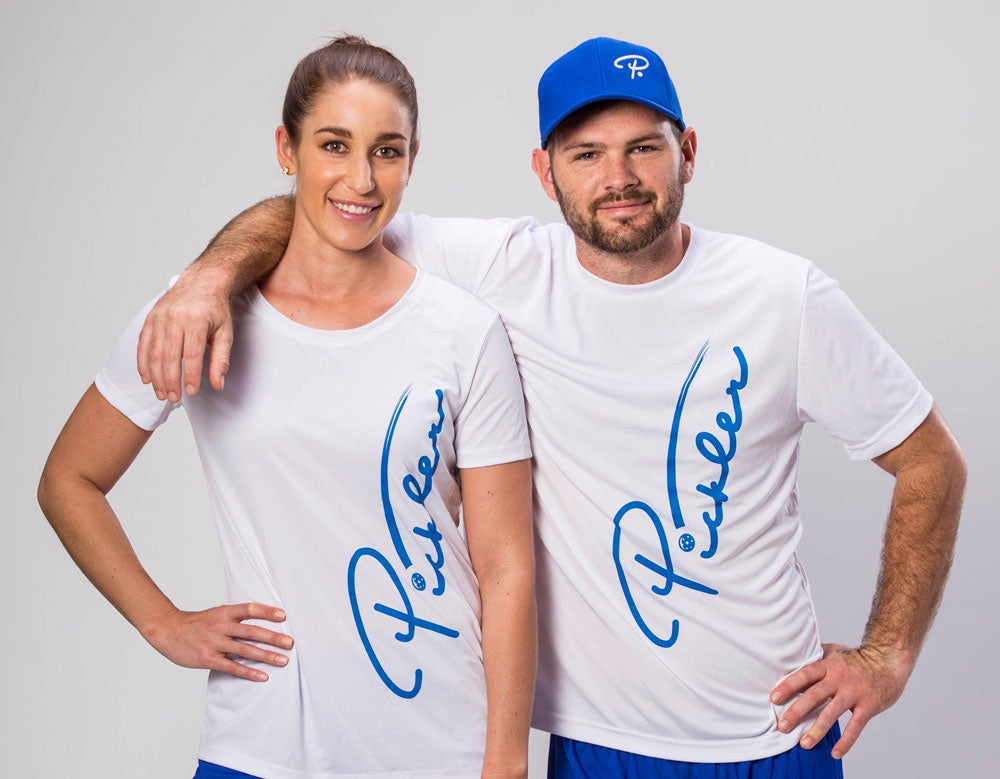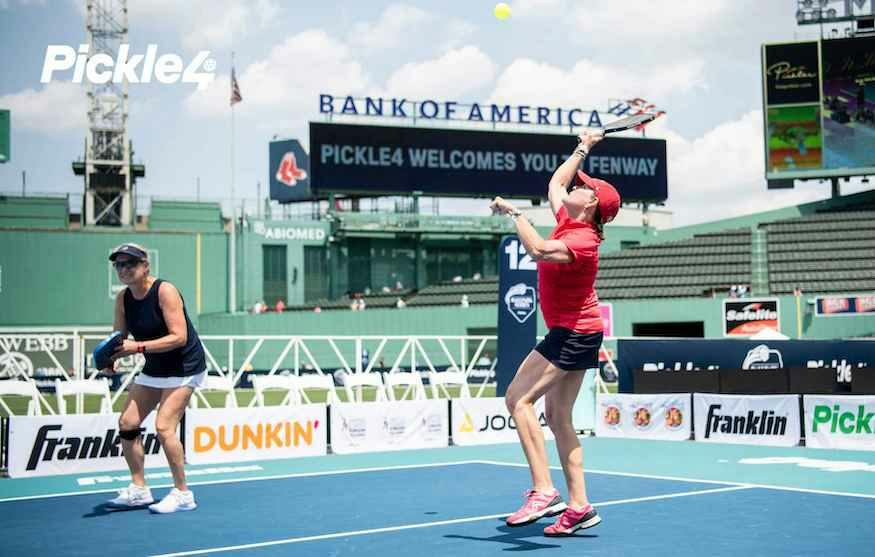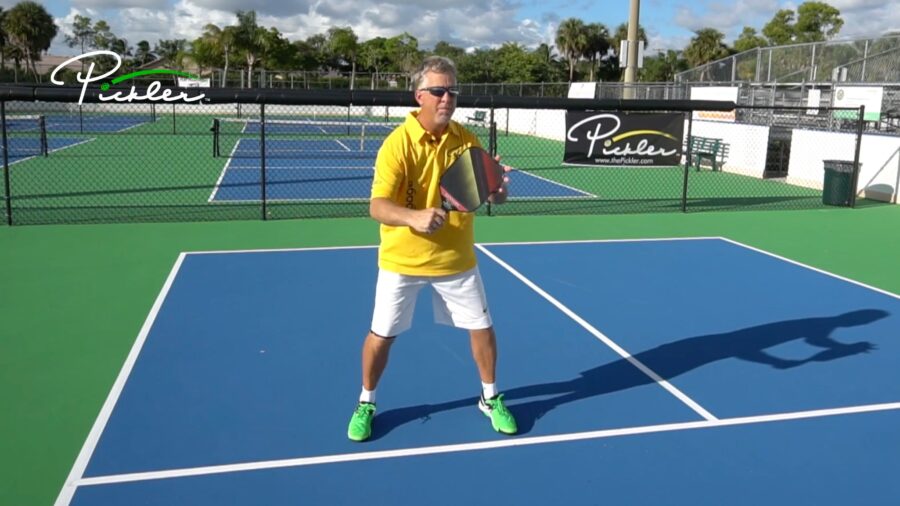The rules of pickleball are generally straightforward. However, pickleball scoring rules commonly give players trouble, especially beginner players.
This blog breaks down all of the pickleball scoring rules, so you will be a master of the score on the pickleball court. This is a valuable skill, as many players oftentimes forget the score on the pickleball court, even after just one point!
Basics of Pickleball Scoring
In doubles pickleball, the score is made up of three numbers (for instance, 0-0-2). The first number represents the serving team’s score. The second number represents the receiving team’s score. The third number represents the server number, which is either server #1 or server #2. For example, if the score in doubles pickleball is 10-8-2, then this means that the serving team has 10 points, the receiving team has 8 points, and the serving team is on server #2.
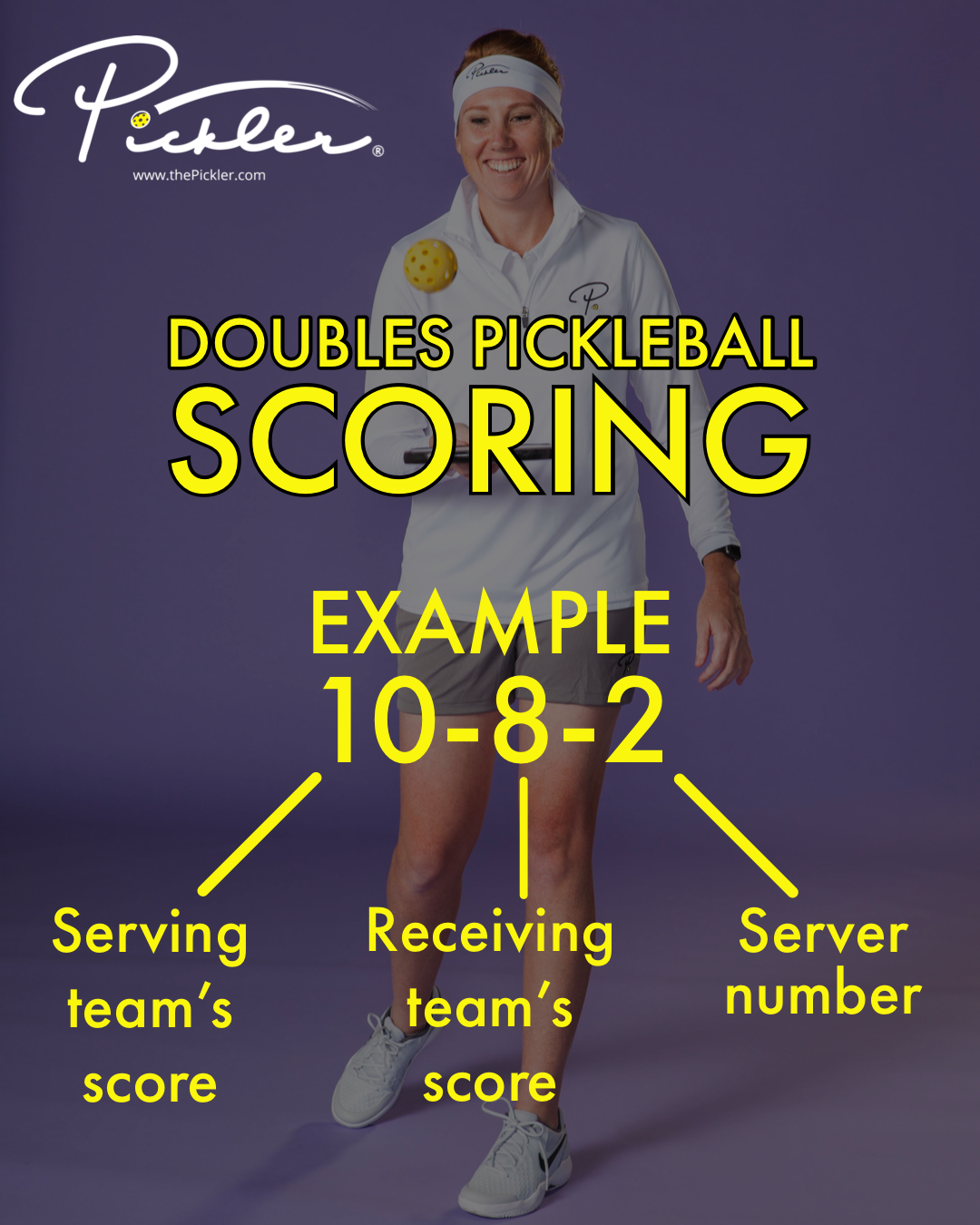
In singles pickleball, the score is made up of only two numbers (for instance, 0-0). The first number represents the server’s score. The second number represents the receiver’s score. There is no third number because, in singles pickleball, each side only has one serve (rather than two serves). For example, if the score in singles pickleball is 10-8, then this means that the server has 10 points and the receiver has 8 points.
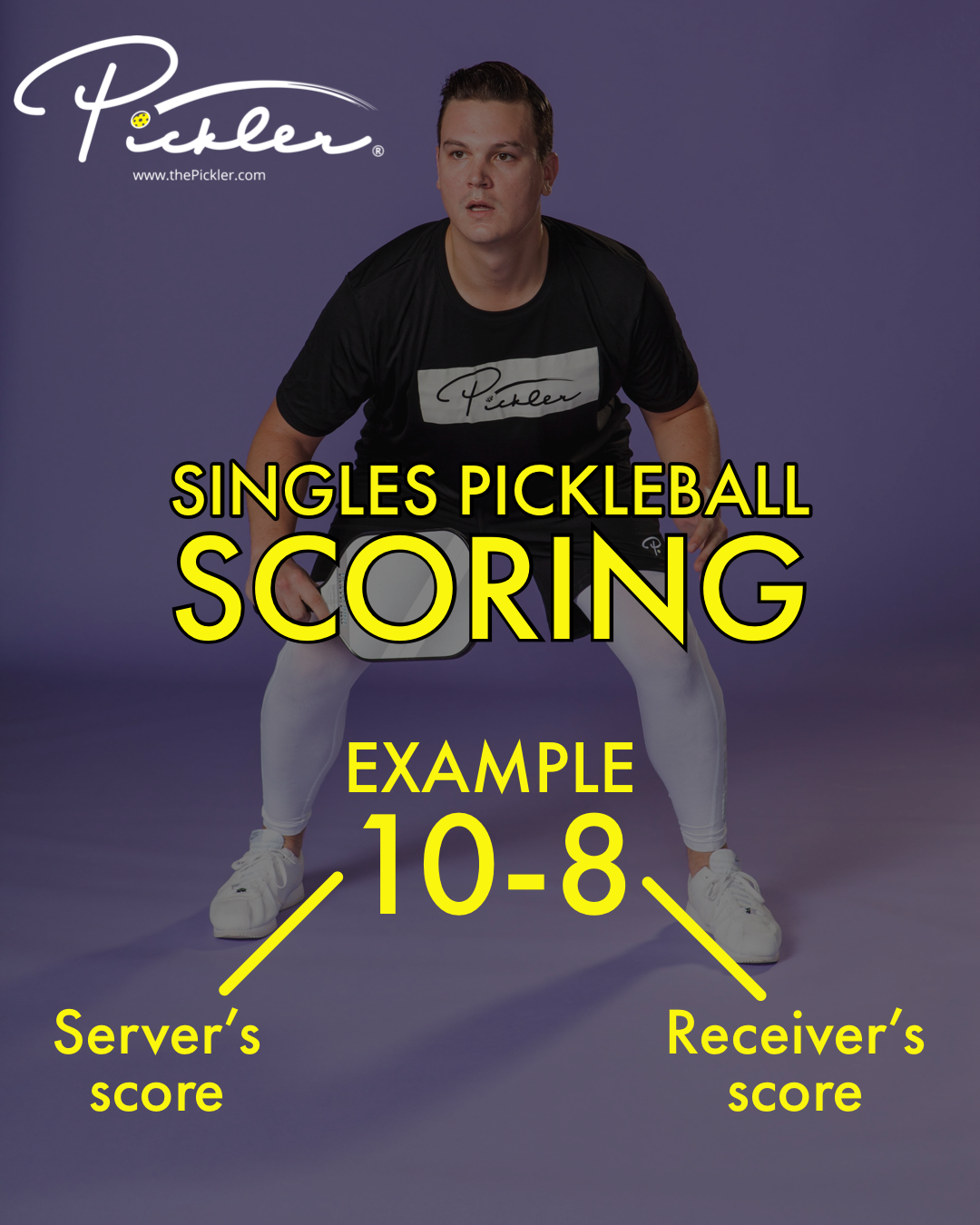
Points are scored in a pickleball game only when a team is serving (or when technical fouls are called against the opposing side and the opposing side has zero points). This is true for both doubles pickleball and singles pickleball. To score a point on the pickleball court as the serving team, you must win the rally.
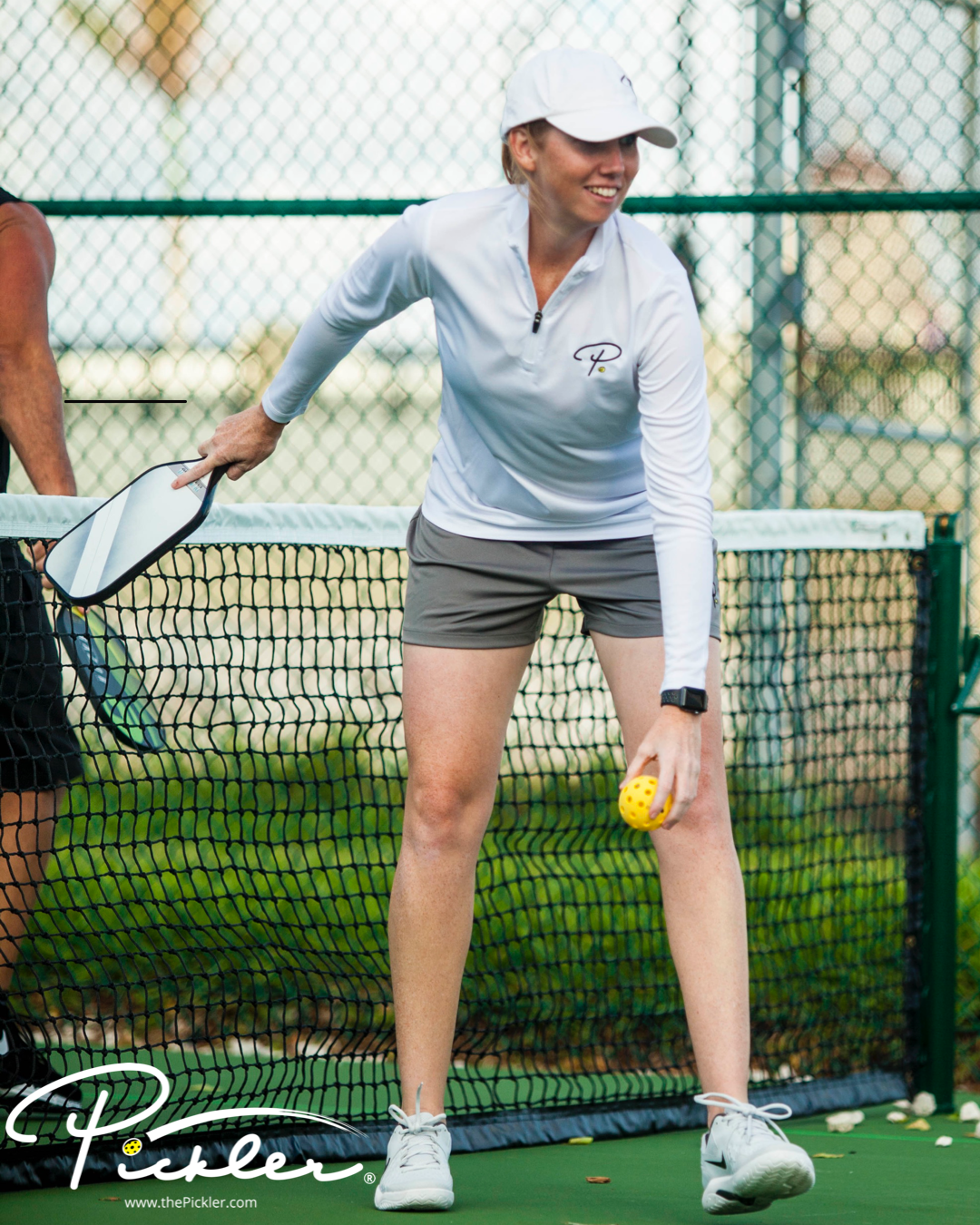
To win a pickleball game, you must be the first team to score the winning point. Most games in pickleball are played to 11 points (win by 2), although some pickleball games in tournament settings may be played to 15 points (win by 2) or 21 points (win by 2).
Player Positioning for Doubles Pickleball
Each team in doubles pickleball will receive two serves, one for each partner, except for the team that serves to start the game. The team that serves to start the game will only receive one serve. As a result, the correct score to start any game is 0-0-2 – 0 points for the serving team, 0 points for the receiving team, and serve #2 because, if the serving team loses a rally or commits a fault, there will be side out and the opposing team will take the serve.
Every serve to start the game will begin in the even/right-hand side of the pickleball court and the server will serve the pickleball crosscourt (or diagonal) to the even/right-hand side of the pickleball court for the receiving team.
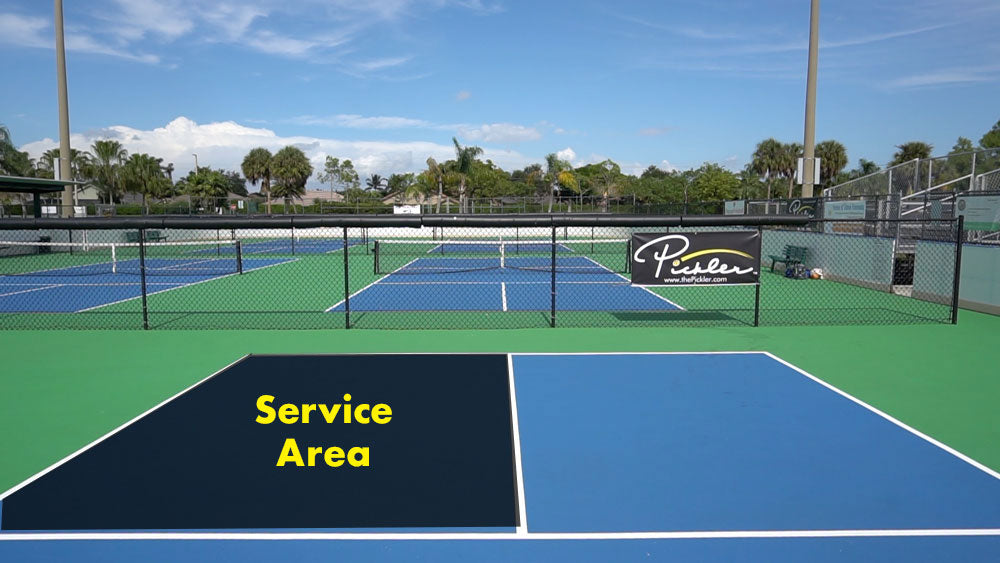
After the first side out, each doubles team will have two serves. The first serve of each side will always start on the even/right-hand side of the pickleball court (the first server will server #1). If the serving team wins the point, then the serving team will keep the serve, and server #1 and his or her partner will switch sides of the court. Server #1 will then serve diagonally in the other direction. The serving team will only switch sides of the pickleball court upon winning a point. To note, only the serving team can score points. As a result, the receiving team will not switch sides of the court – only the serving team will switch sides of the court upon winning a point.
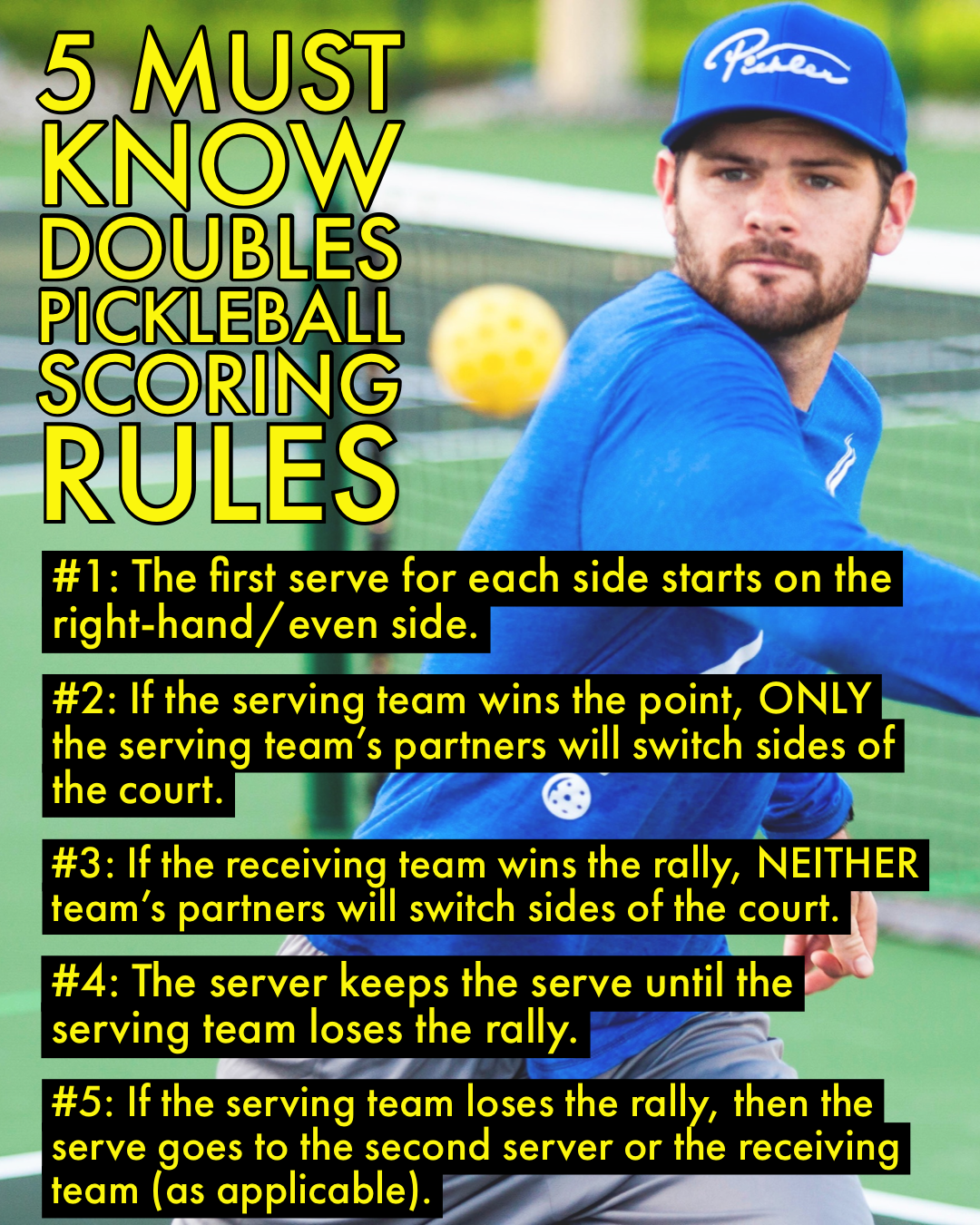
Server #1 will keep the serve until the opposing team wins the rally or the serving team commits a fault. Once the opposing team wins the rally or the serving team commits a fault, server #1 will lose his or her serve and the serve will go to the other partner on the doubles team (called server #2) (as a reminder, however, the first team to serve to start a pickleball game will only have one serve). Server #2 will then serve the pickleball and will keep the serve until the opposing team wins the rally or the serving team commits a fault. If both partners on a doubles team lose their serves, then there will be a side out and the opposing team will serve.
Player positioning is important on the serve and the return of serve. The correct server must serve the pickleball from the correct side of the pickleball court, and the correct receiver must return the serve from the correct side of the pickleball court. The correct side of the pickleball court is dictated by the score of the pickleball game:
- If the score is even (0, 2, 4, 6, 8, 10, etc.), then the player that started on the even/right-hand side of the pickleball court to start the game should be on the even/right-hand side of the pickleball court.
- If the score is odd (1, 3, 5, 7, 9, etc.), then the player that started on the even/right-hand side of the pickleball court to start the game should be on the odd/left-hand side of the pickleball court.
- In doubles pickleball, there are three numbers to follow to understand the score (for instance, 0-0-2). The first number is the serving team’s score. The second number is the receiving team’s score. And, the third number is what number serve it is for serving team. This is why you start every pickleball game with a score of 0-0-2. Zero is both the serving and receiving team’s score, and 2 is for the second serve, as each game in pickleball starts by the serving team having only one serve.
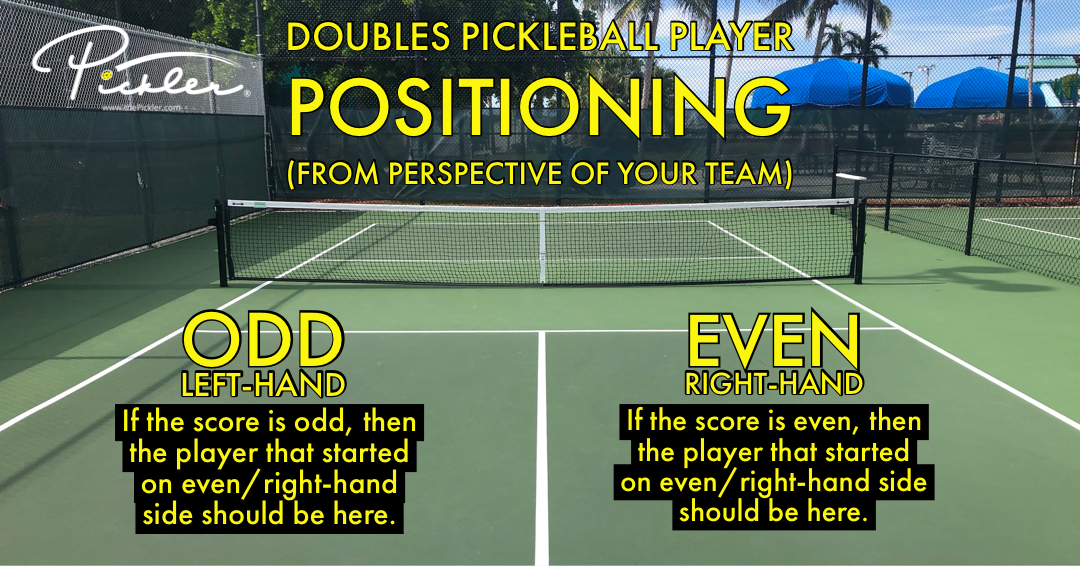
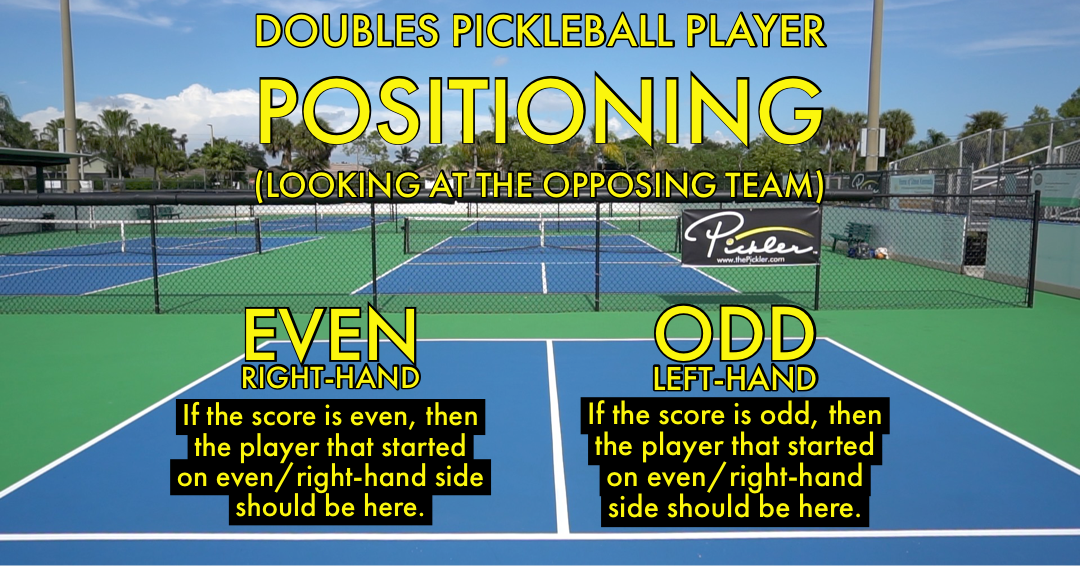
If a player, whether on the serving or receiving team, is found to be in the wrong position, then a fault will occur and the team that committed the fault will lose the rally. A fault may be called upon contact of the serve or return of serve (as applicable), or up until the point of time that the next serve occurs.
If a fault is called prior to the subsequent serve, then the team that committed the fault will lose the rally and no point will be awarded. However, all previously awarded points (whether with the players were in the correct or incorrect positions) will stand. Further, if the fault is called after the subsequent serve, then the awarded point to the team that committed a fault will stand. If the fault occurs on the last point of a pickleball match, then the result will stand unless the fault is called prior to returning the scoresheet to the pickleball tournament operations personnel.
Pickleball Stacking Rules – Advanced Doubles Pickleball Positioning Strategy
Although player positioning is important, there is an advanced pickleball strategy in doubles pickleball to manipulate player positioning on the pickleball court. This advanced pickleball strategy is called stacking, which can be used to keep each partner of a doubles team on the same side of the pickleball court throughout the entire pickleball game. In other words, the partners on a doubles team avoid switching sides of the pickleball court. The pickleball rules that permit stacking are:
- As long as the server is on the correct side of the pickleball court, the server’s partner may be anywhere else on the pickleball court on the serving team’s side of the pickleball net. This includes on the same side of the court and either on or off the pickleball court.
- Similarly, as long as the receiver is on the correct side of the pickleball court, the receiver’s partner may be anywhere else on the pickleball court on the receiving team’s side of the pickleball net. This includes on the same side of the court and either on or off the pickleball court.
- After the serve, the serving team may switch sides of the pickleball court for the duration of the rally. However, at the end of the rally, the serving team must return to the correct positions, which will be dictated by the serving team’s score and each partner on the serving team’s starting position.
- After the return of serve, the receiving team may switch sides of the pickleball court for the duration of the rally. However, at the end of the rally, the receiving team must return to the correct positions, which will be dictated by the receiving team’s score and each partner on the receiving team’s starting position.
For a brief example of stacking by a serving team, see the pictures below. The goal of the stacking strategy is to keep Stacie on the right-hand/even side of the pickleball court (which is on the left side when looking at the pictures below) and to keep Coach Steve on the left-hand/odd side of the pickleball court (which is on the right side when looking at the pictures below).
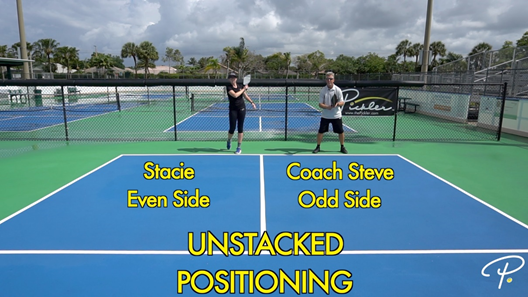
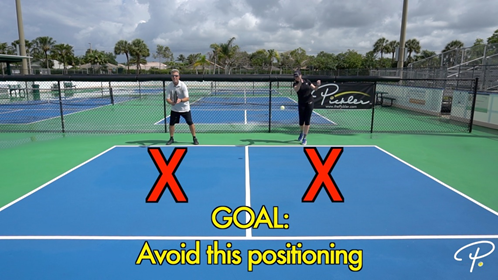
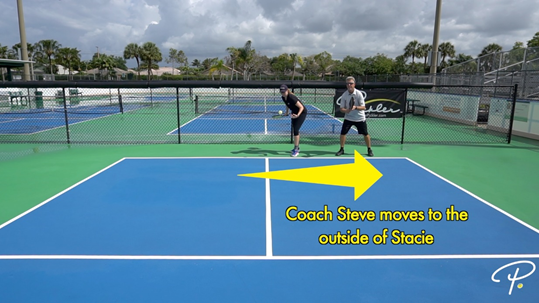
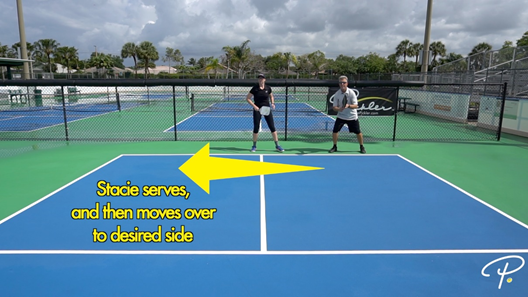
Stacking is popular in the following circumstances:
- When your partner plays with the opposite hand as you (think a righty and a lefty), you will want to stack so that both forehands are in the middle of the court;
- When one player has a stronger forehand or backhand than the other, you will want to stack to keep the player with the stronger forehand or backhand toward the middle of the court;
- When one player may be a little stronger than the other, you may want to stack to keep the player with the stronger skill set with the forehand toward the middle of the court (in other words, the stronger player on the even/right-hand side of the pickleball court); and
- Where you and your partner have a stronger match up when you are across the net from a particular opponent.
To learn how to master pickleball stacking for doubles pickleball, check out Pickler’s online pickleball video lesson collection called My Pro Pickleball Coach. My Pro Pickleball Coach features over 140 video lessons (over 7 hours of instruction!), as well as a corresponding e-book. These online video lessons are available on demand 24/7 and breakdown every aspect of the sport of pickleball, including advanced shots, strategies, and other concepts like stacking. Unlike other videos on the web, My Pro Pickleball Coach’s video and e-book collection is organized for you in one place, has one consistent message from start to finish, touches on every aspect of the game, and is taught by the best coach in the pickleball coaching business!
Player Positioning for Singles Pickleball
Singles pickleball generally has the same rules as doubles pickleball, except that each player only has one serve. Also, there is no need for the third number in the score for singles pickleball, as there is no concept of server #1 or server #2. As a result, the score in singles pickleball will only be two numbers – the first number will be the server’s score and the second number will be the receiver’s score.
The first serve will always start on the even/right-hand side of the pickleball court. If the server wins the point, then the server will keep the serve and switch to serve on the other side of the pickleball court. The server will always serve crosscourt/diagonally and will keep the serve until the opponent wins the rally or the server commits a fault. If the opponent wins the rally or the server commits a fault, then there will be a side out and the opponent will now serve.
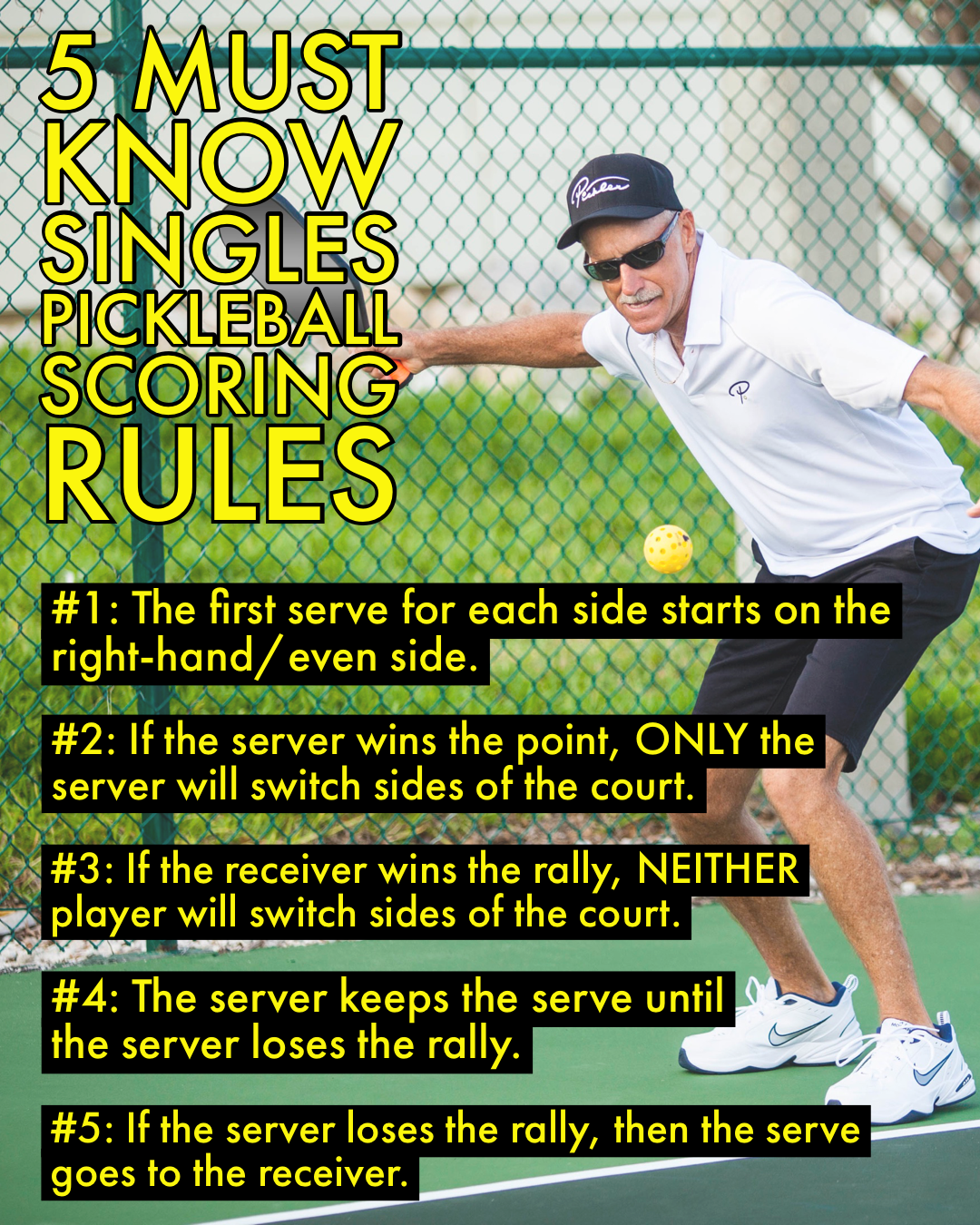
Similar to doubles pickleball, player positioning is important on the serve and the return of serve. The correct server must serve the pickleball from the correct side of the pickleball court, and the correct receiver must return the serve from the correct side of the pickleball court. The correct side of the pickleball court is dictated by the score of the pickleball game:
- If the server’s score is even (0, 2, 4, 6, 8, 10, etc.), then the serve must be from the even/right-hand side of the pickleball court and served to the receiver’s even/right-hand side of the pickleball court.
- If the server’s score is odd (1, 3, 5, 7, 9, etc.), then the serve must be from the odd/left-hand side of the pickleball court and served to the receiver’s odd/left-hand side of the pickleball court.
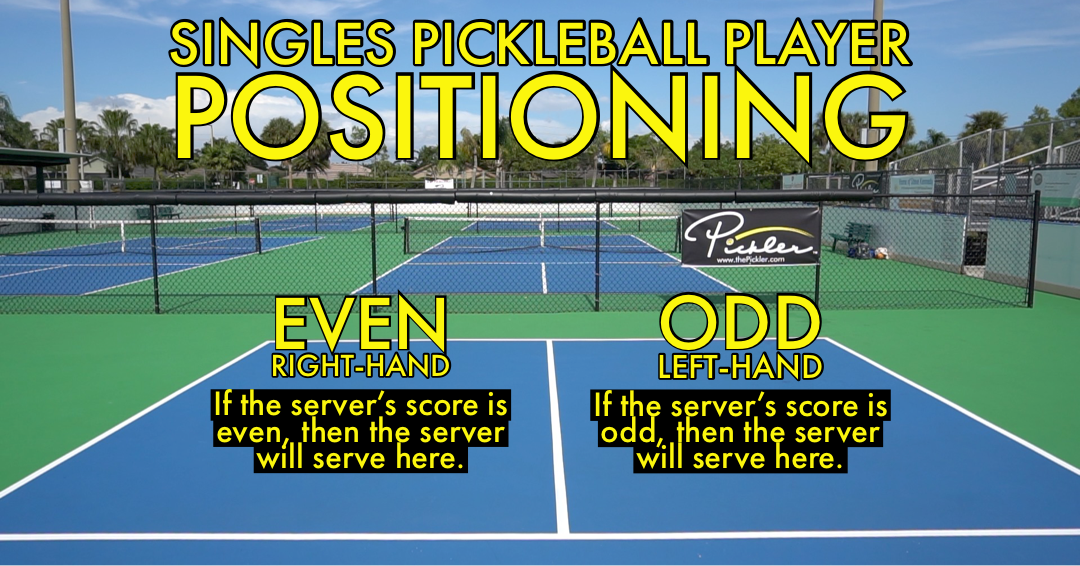
If the server in singles pickleball is found to be in the wrong position, then a fault will occur and the server will lose the rally. A fault can be called upon contact of the serve or up until the point of time that the next serve occurs.
If a fault is called prior to the subsequent serve, then the server will lose the rally and no point will be awarded. However, all previously awarded points (whether with the players were in the correct or incorrect positions) will stand. Further, if the fault is called after the subsequent serve, then the awarded point to the server will stand. If the fault occurs on the last point of a pickleball match, then the result will stand unless the fault is called prior to returning the scoresheet to the pickleball tournament operations personnel.
Calling the Score in Pickleball
The score in any pickleball game should not be called until both the server and the receiver are (or should be) in the correct positions and all players on the pickleball court are (or should be) ready to play. However, the score can be called if it appears that the server or receiver are delaying the game.
To help indicate that you are “not ready” for the score to be called or to prevent the quick server from serving the pickleball before you are ready, either (1) raise your pickleball paddle, or non-paddle hand, above your head, or (2) completely turn your back to the net. However, be aware that any “not ready” signals will be ignored if they are triggered after the start of the score being called. Also, be aware that “not ready” signals cannot be used to delay the game.
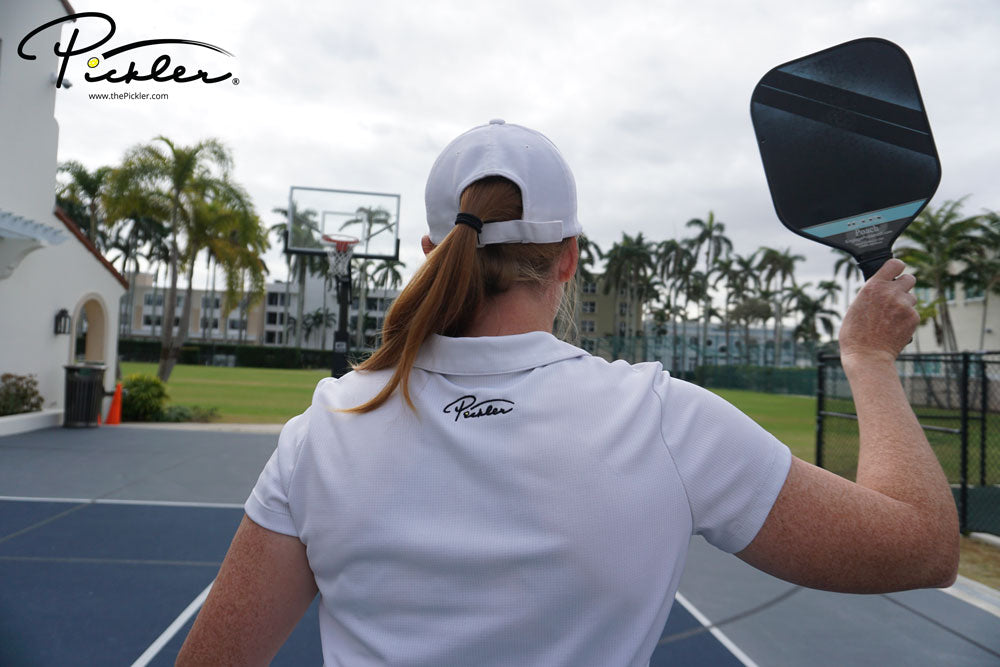
If a server cannot call the score to a sufficient volume for all of the players to hear, then the server’s partner may call the score on behalf of the server. However, the person calling the score for the serving team may not change. The server’s partner must call the score for the remainder of the game.
What Happens If the Wrong Score Is Called in Pickleball?
At times, the server (or the referee) could call the wrong score on the pickleball court. If the wrong score is called by the server (or the referee), any player on the pickleball court can stop play, and ask for the correct score to be re-called, before the third shot of the rally is hit.
- If play is stopped before the third shot of the rally is hit, and the score was called incorrectly, then the server (or the referee) will re-call the correct score and re-serve the pickleball with no penalty.
- However, if a player on the pickleball court stops play after the third shot of the rally is hit, then the player who stopped play will have committed a fault and will lose the rally. In other words, you cannot raise the issue of the wrong score being called after the third shot of the rally is hit – you must challenge the issue of the wrong score being called before the third shot of the rally is hit.
- Further, if play is stopped at any time after the score has been called, but the score was called correctly, then the player who stopped play to challenge or contradict the score will have committed a fault and will lose the rally. Stopping play includes any statement by a player to a referee indicating that the score is wrong. For instance, “Referee, we have 10, not 9.”
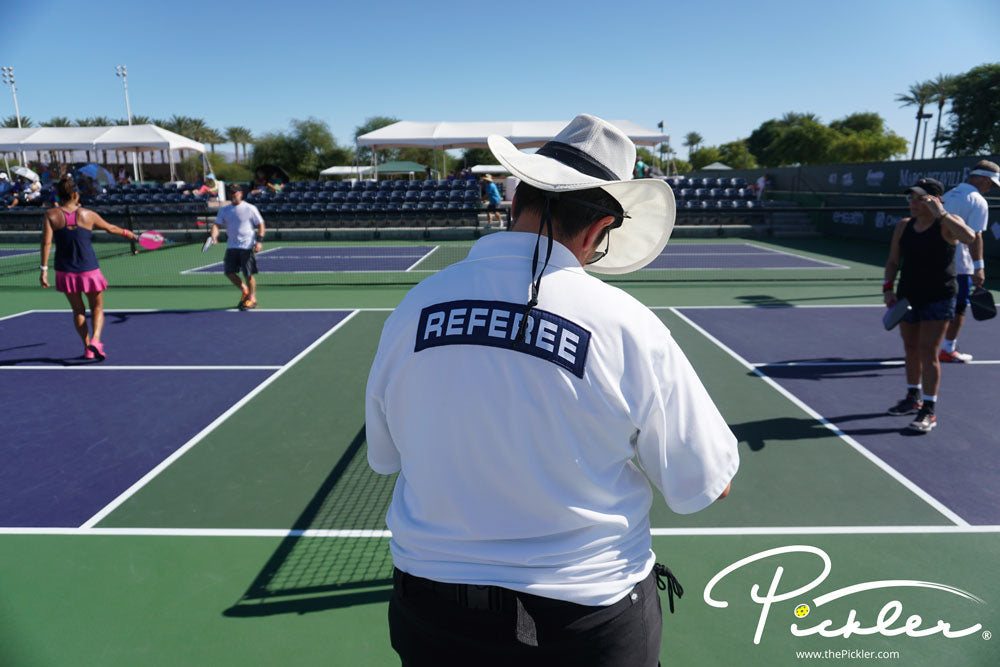
To note, this rule regarding the wrong score being called is more important in tournament or competitive play, than recreational play. Recreational pickleball players tend to be more forgiving, and tend to generally play on. Nevertheless, it is important to understand the proper rules of the sport of pickleball to avoid controversy on the pickleball court.
Asking the Referee the Pickleball Score
Common questions on the pickleball court could include: What is the score? Who is the server? What day of the week is it? Who are you people? (*kidding*) All kidding aside, during pickleball tournament play, only certain questions are permitted to be asked to the referees on the pickleball court when it comes to the score and/or how to determine the correct score:
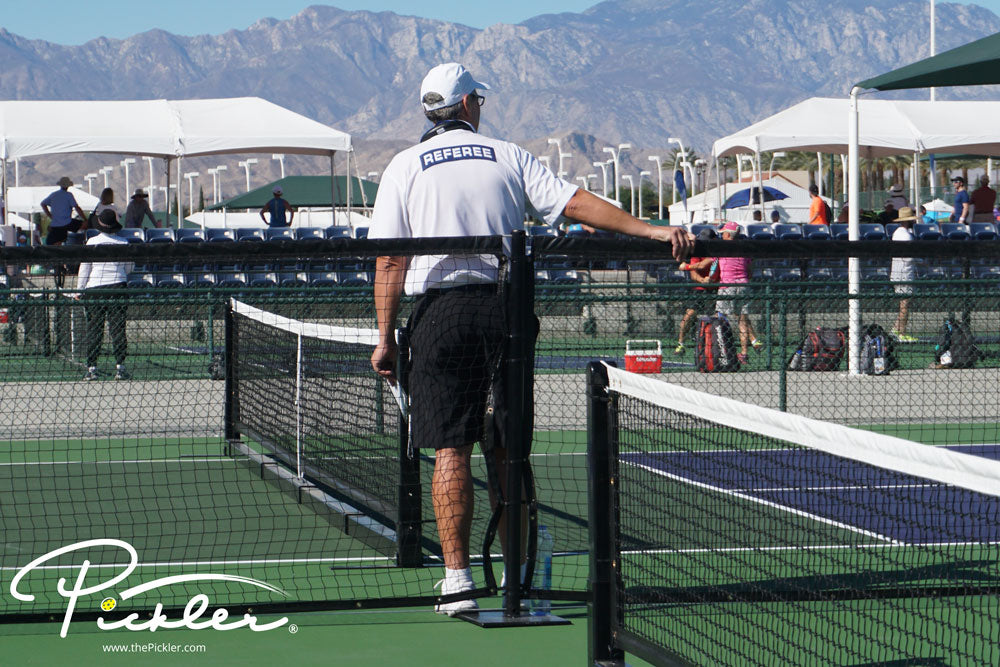
- The serving team may ask the following questions to the referee at any time prior to the serve:
- What is the score?
- Who is the correct server?
- Are we in the correct position?
- Are we correct? (this one questions captures the positioning and server questions)
- The receiving team may ask the following questions to the referee at any time prior to the serve:
- What is the score?
- Who is the correct receiver?
- Are we in the correct position?
- Are we correct? (this one questions captures the positioning and receiver questions)
If the serving team or receiving team asks the referee any of these questions prior to the serve being struck, then the referee will call time, answer the question, and then re-call the score. However, if these questions are asked after the serve, then the referee will ignore the questions. Further, if the serving team or receiving team (as applicable) continuously asks these questions in an effort to delay or disrupt the pickleball game, then the referee may call a technical warning on the overly inquisitive team.
Pickleball Rules – What to Master Next?
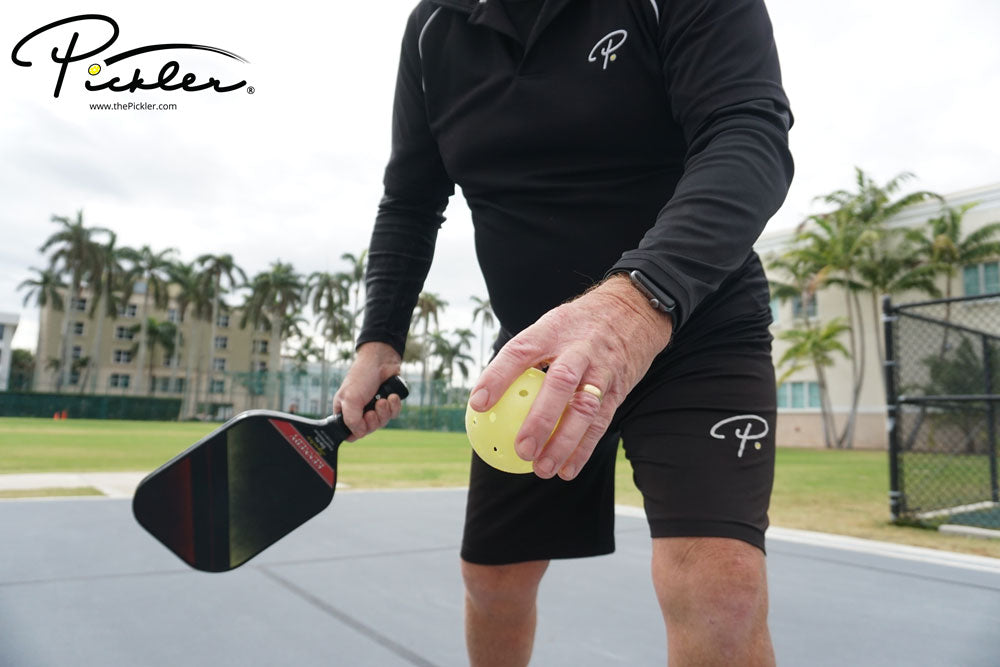
Now that you have mastered the pickleball scoring rules, it is time to master the pickleball serving rules!
Also, if you want more tips, strategies, and in-depth coaching to improve your pickleball game, check out Pickler’s online video lesson collection called My Pro Pickleball Coach.
Looking for More Pickleball Rules?
We know pickleball rules can be tricky at times. Don’t worry. Pickler explains the ins and outs of all of the pickleball rules in a series of pickleball rules blogs to make sure that you make the right call on the pickleball court. Learn more by visiting Pickler’s pickleball rules blogs that are linked below!
- Pickleball Rules – The Ultimate Guide to the Rules of Pickleball
- 10 Must Know Pickleball Rules Before Your Hit the Court
- 10 Pickleball Rules Changes to Learn for 2021
- Pickleball Rules – Learn How to Start – 5 Things You Need to Play
- Pickleball Dictionary – Quickly Learn the Pickleball Vocabulary
- Pickleball Serving Rules – Master the Start of Every Pickleball Game
- Pickleball Scoring Rules – Learn How to Keep the Score in Pickleball
- Pickleball Kitchen Rules – Learn Important Non-Volley Zone Rules
- Pickleball Line Call Rules – How to Make the Right Call
- Pickleball Rules – Faults & Dead Balls on the Pickleball Court
- Pickleball Rules – Commonly Misunderstood Rules in Pickleball
- Pickleball Tournament Rules – Must Read Before a Tournament
- Singles Pickleball Rules – How to Play Singles Pickleball
- Wheelchair Pickleball Rules – How to Play Wheelchair Pickleball

